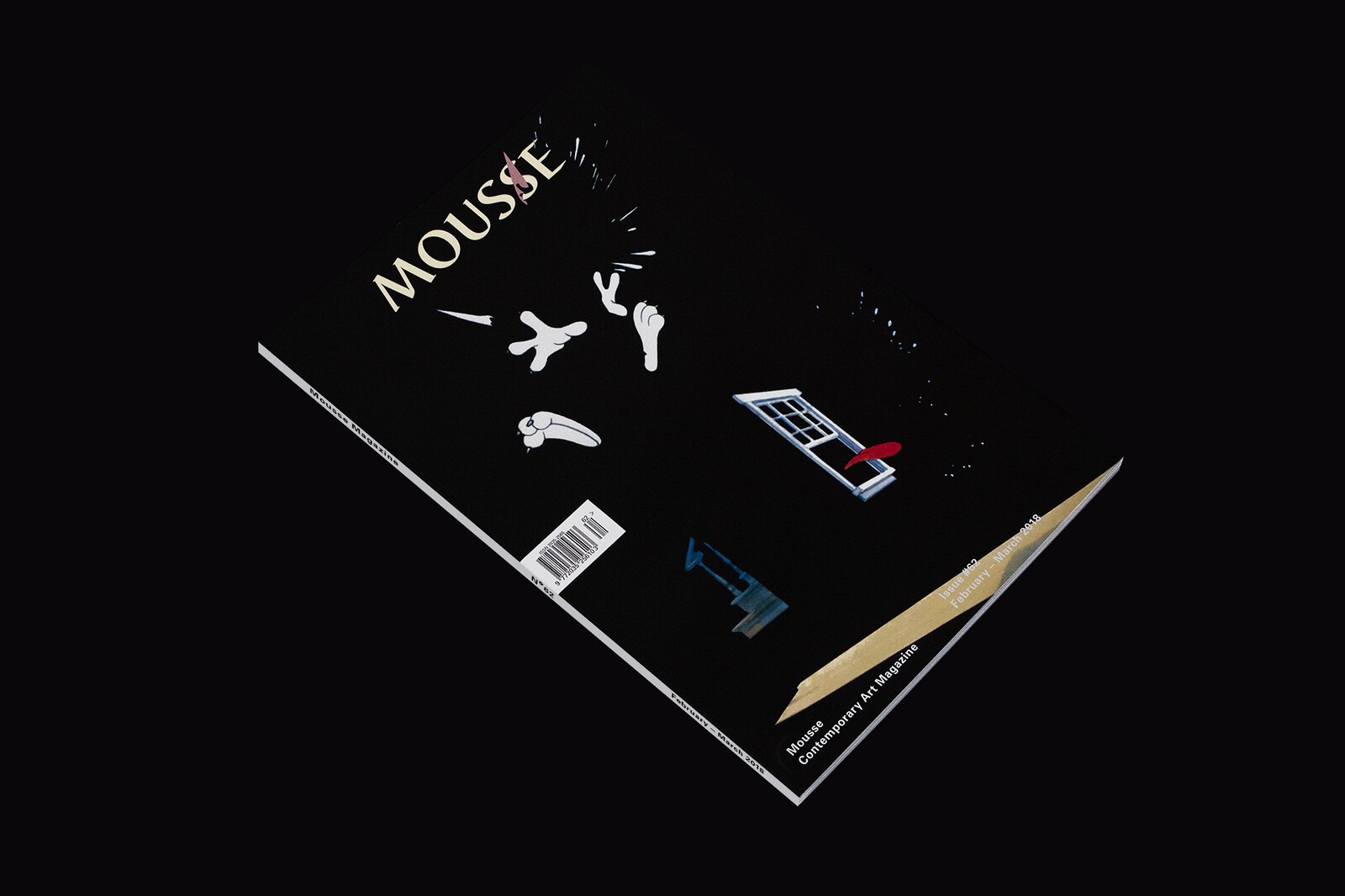Mousse
February–March 2018
Get issue #62 or subscribe
iPad edition #62 and subscription available soon on Apple Newsstand
In this issue:
The Other Side of the Door: Rita McBride by Mitch Speed
Rita McBride, whose new work was widely shown this past winter in Berlin, Brussels, and New York, opens up to Mitch Speed about sculpture, the social implications of art making, and science fiction.
Neurocore: Lu Yang by Alvin Li
Can human beings mutate into what we historically called “gods” with the help of advanced technology? Lu Yang sat with Alvin Li to discuss her interest in the physiology of the human brain, religious narratives, and the aesthetics of gaming and anime in relation to her hyper-stimulating, arcade-like installations.
Animals, Tamers, and Clowns: Martin Arnold by Emmanuelle André
“I never took ‘the movies’ very seriously and I dislike movie theaters. But I have always been interested in the succession of frames and what can be done with it.” –Martin Arnold
Getting Lost by Ben Eastham
“A forty-year-old photograph might offer one means of thinking around what it means to express solidarity in the field of contemporary art, and even offer a potential model for exchange and community building. The image captures an encounter between two artists, one of whom is effectively protesting against the other.” –Ben Eastham
Do You Believe in Evil? Julia Phillips and Aaron Gilbert in conversation
Artists Julia Phillips and Aaron Gilbert discuss their respective practices, and respond to each other’s, in this discussion. Gilbert calls Phillips’s work “equally delicate and devastating,” both “calculated” and “intense”; she calls his “free of decorative elements” and possessing “undeniable beauty.”
And:
Julia Scher discusses with Maurin Dietrich the psychosocial implications of surveillance, power, and control.
Michael Stevenson and Barbara Casavecchia reflect on the construction of “learning environments,” the stifling repetition of received knowledge in traditional educational institutions, and the possibility of generating change with the development of new “communities of practice.”
Alexandra Pirici opens up to Antonia Alampi, untangling the complex layers that define her artistic practice.
Ross Simonini on the inherent moral conflict of making art in a world of decreasing attention and increasing visibility.
Kathy Noble investigates how the institutions that structure our lives shape the situations we find ourselves in through The Situation, a book by Hannah Black, and The Square, a film directed by Robert Östlund.
Erika Verzutti speaks with Fernanda Brenner about the themes that inform the inventory of forms that she has been developing, collecting, and reconfiguring.
Andrew Berardini on the paintings and sculptures of Simphiwe Ndzube.
Diego Marcon looks back at his artistic production and career with Eva Fabbris.
Tiona Nekkia McClodden and Jenny Schlenzka talk about their mutual fascination with the liminal power of nightlife, and how clubs might serve as role models for art organizations.
Diamond Stingily unveils to Precious Okoyomon the autobiographical power of her practice.
Meriem Bennani in dialogue with Rahel Aima on dystopia in sci-fi, mise en abyme, and Maghrebi futurism.
Omar Kholeif on the notion of the “Arab trickster” and the subversion of political realities in contemporary art.
Hans Ulrich Obrist traces the career of Siri Aurdal.
Asad Raza examines with Laura McLean-Ferris how his practice seeks to consider the different ways that objects and living things dwell in space.
Lydia Ourahmane, interviewed by Adam Carr, tracks the ongoing journey leading to her first solo institutional show at Chisenhale Gallery, London.
Buy Mousse #62
More reviews, interviews and essays on moussemagazine.it
Join our newsletter
Books by Mousse Publishing
Mousse Agency
Film & video on vdrome.org


